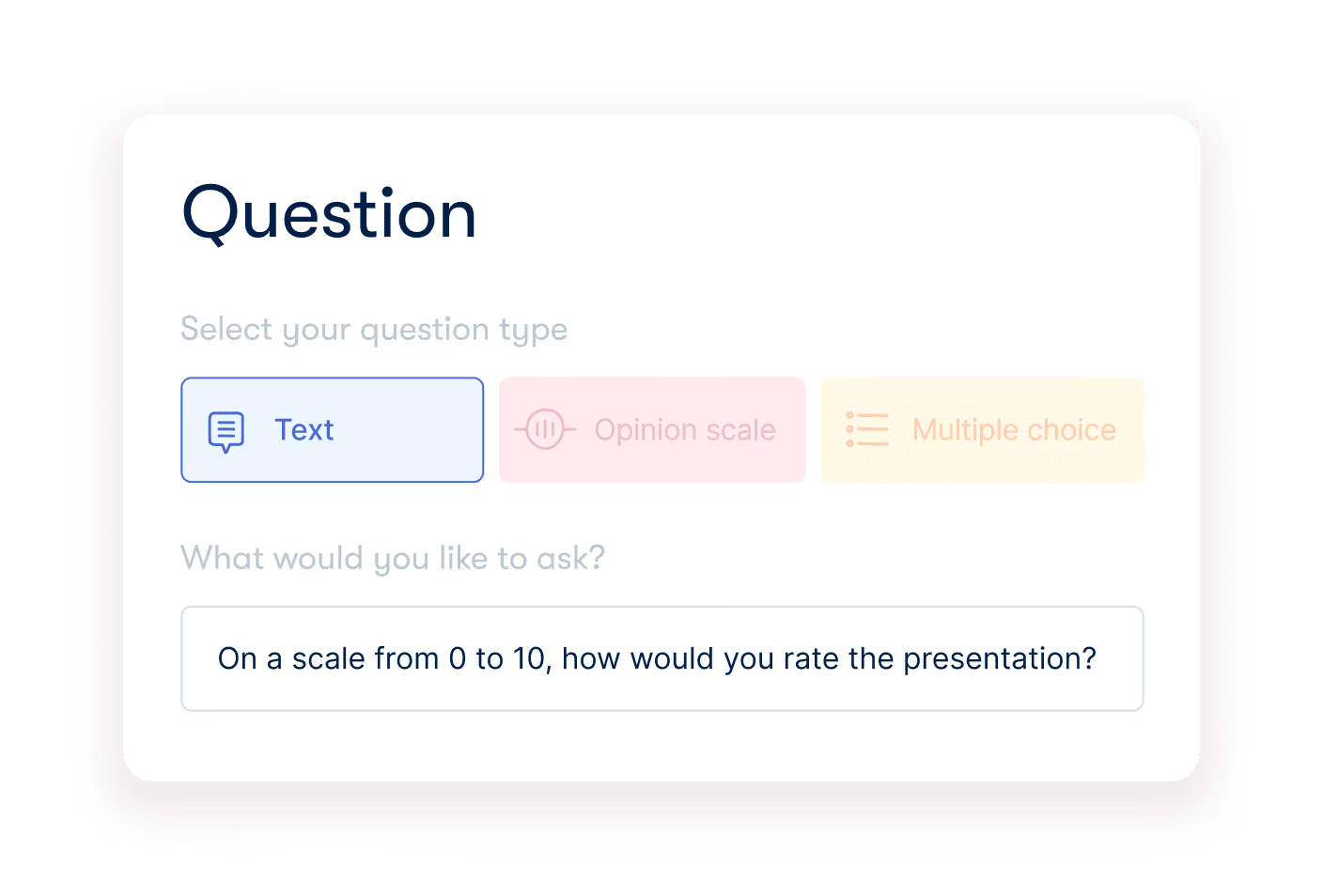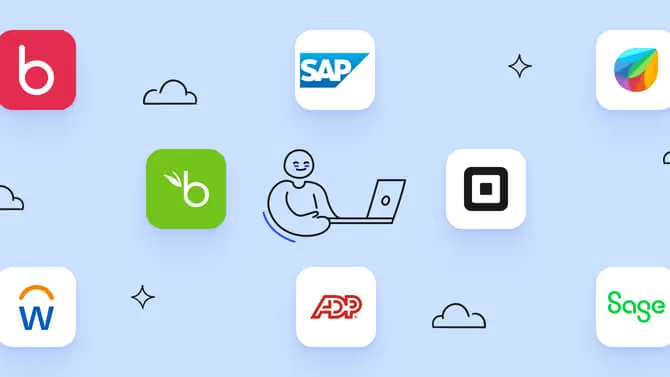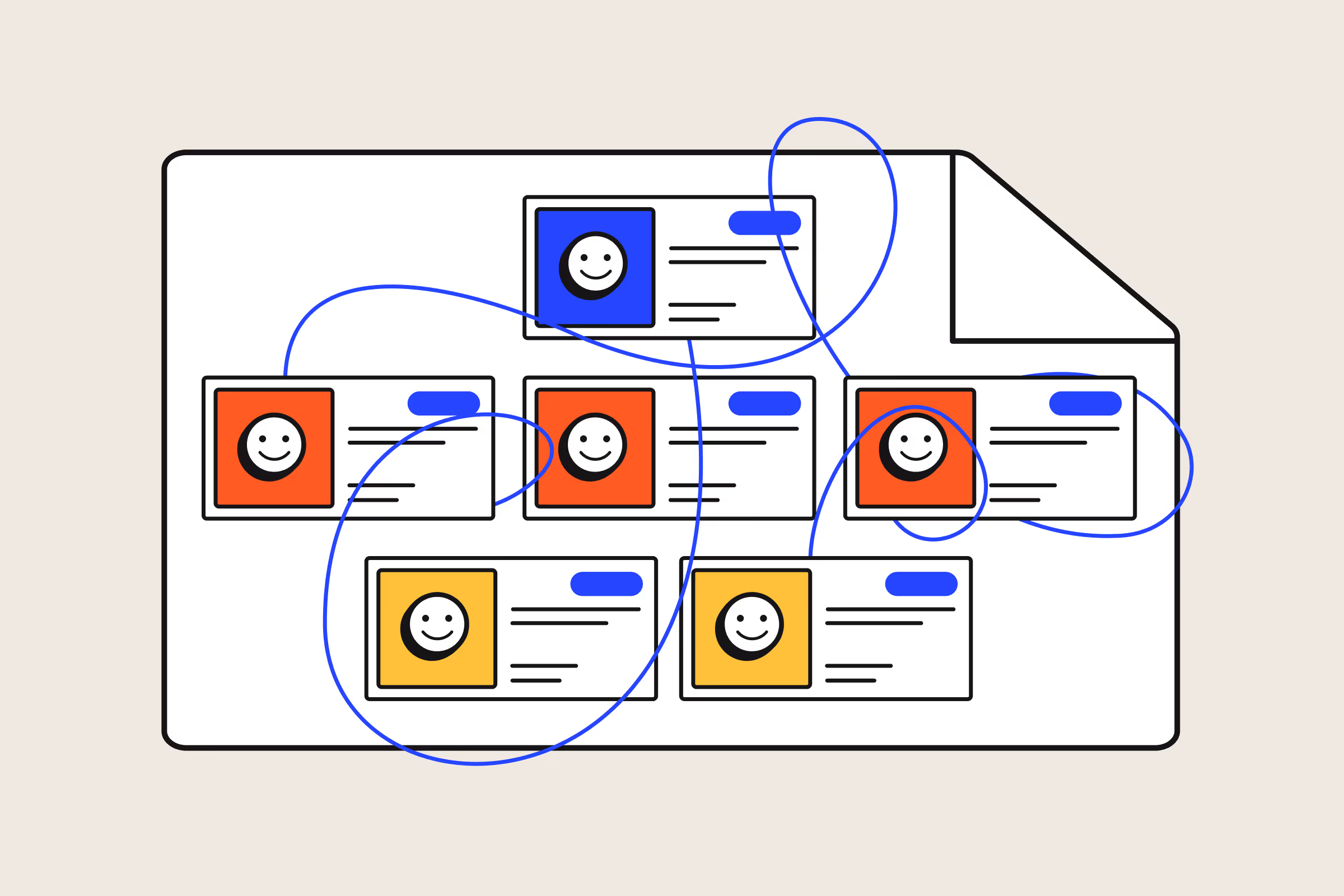Continuous feedback loop strategies: top ways to increase engagement

Discover Workleap Officevibe's benchmark report on 12 key employee engagement metrics

In a competitive business world, it’s becoming harder than ever to retain your best employees. It’s vitally important to understand how your employees feel, especially as your organization grows and changes.
Many businesses are discovering that the continuous feedback loop model is critical for tapping into such insights, getting everyone on the same page, and enhancing employee engagement.
The rewards of getting an effective feedback loop right are immense. But don't worry, we'll help you get there. In this article, we’re sharing what constitutes good continuous feedback loops and suggesting the top strategies for using one successfully.
{emphasize}Continuous feedback loop strategies to elevate the employee experience
- What is a continuous feedback loop?
- Enabling a continuous feedback system in your team
- Continuous feedback loop strategies
- Building a continuous feedback loop
- How Officevibe accelerates the continuous employee feedback process{emphasize}
What is a continuous feedback loop?
A continuous feedback process is a system that allows managers to collect opinions, suggestions, and comments from employees regularly.
Officevibe research shows that only 25% of employees feel the feedback they receive is sufficient to help them improve.
So better feedback is sorely needed.
Traditionally, all the feedback was collected using largely informal methods. A company might use email, spreadsheets, or even an old-fashioned suggestion box to gather data.
Those methods still work, but there are better options. You can now take advantage of continuous feedback software dedicated to the ongoing process of gathering and analyzing employee feedback.
Imagine that: one platform where you can identify areas of concern and create an action plan to address them — critical parts of building a better workplace culture where employees feel heard.
Feedback loops allow for continuous learning. They're a simple yet highly effective way to check the pulse of employee sentiment and find out what needs to change.
Once you’re up and running, you’ll love all the benefits your new feedback system delivers:
- Timely insights into issues that demand attention, enabling you to fix problems fast
- More engaged employees who love the opportunity to make a difference
- Improved management/employee relationships, thanks to better, real-time communication
- Enhanced productivity from a more motivated workforce
- Greater return on your investment in employee engagement solutions
Enabling a continuous feedback system in your team
As we’ve seen, there are many good reasons for collecting ongoing feedback from your teams. The next step is to get ready for implementation.
Communicate the benefits of continuous feedback
With so many advantages, you may be eager to get continuous feedback loops up and running. Fantastic! But be careful not to let your enthusiasm sidetrack you from making sure that everyone on your team is on board with the idea first.
Busy employees may worry about being given yet another task to complete. So explain to everyone why the feedback loop is important and how it will help them. Once they see the opportunities to share feedback and benefit from a program where their voices are heard, they will become ambassadors for the new initiative.
Scale into your employee feedback loop
Remember, you don’t have to dive into the deep end from the start. You can start small with a simple survey covering the key questions. As everyone gets used to participating in your employee feedback loop, you can add richer questions that provide a more granular response.
In the first instance, you might ask questions such as:
How satisfied are you with the relationship with your manager?
Later, you might collect more nuanced responses by asking:
How can your relationship with your manager be improved?
You can create a richer data set that provides fundamental insights into problem areas by adding more context to your questions over time.
Continuous feedback loop strategies
There are many different ways to implement continuous feedback systems. Here are some proven strategies that may work well for you:
Schedule weekly feedback sessions
A popular and productive way to get two-way communications going is to institute a Feedback Friday. Of course, this can also be a Feedback Monday or whatever works for your business.
During these sessions, you can seek out comments and contributions on topics like:
- Wins and successes that deserve attention
- Issues requiring attention
- Praise for colleagues
- Ideas and suggestions
In these sessions, managers can provide feedback to employees, too. That's the whole premise of the loop! It's not just one way. At times, these conversations can be delicate and need careful handling. We’ve created some constructive employee feedback examples to help you stay on track.

Create a continuous improvement board
A continuous improvement board may be more familiar with a performance management system, where its common uses track performance and project status. Here’s an idea that works well if you have an office-based team. Set up a board in a prominent place and invite team members to add their thoughts to the board.
They can add Post-It notes with a suggestion, a photo highlighting a problem, or a scribbled ‘thank you’ message. Anything goes within reason. It's an interactive approach to collecting feedback that can surface outside-of-the-box ideas and perspectives.
For virtual teams, you can implement something similar using online whiteboard tools like Miro. Employees then share and vote on the best ideas, giving managers clear direction on what people want.
Create a peer feedback loop
A great way to improve the way teams work together is to create a peer feedback loop. By seeking continuous improvement in collaboration, you can raise the bar and enhance team morale.
And guess what, your people want it:
28% of employees want to have more frequent feedback from their peers.
The State of Employee Experience, From Here On Out
Further, an impressive 96% feel like they collaborate well with peers.
There’s no reason why those healthy connections aren’t also used for
helpful feedback.
Collect feedback from remote teams
Now that remote working is here to stay, it’s vital to engage employees wherever they may be.
Hands down, the world of distributed work is where feedback survey software scores over more traditional approaches. Tools such as Officevibe collect and analyze feedback from all team members, no matter where they work.
Using feedback software also offers the added benefit of extra features built right into the app, like:
- the ability to answer feedback, opening up a back-and-forth exchange where employees can choose to stay anonymous or not
- in-app guidance that helps you respond to tough feedback with tact
- custom polls where you can write your own questions to dig deeper into a specific issue

💡 Tip You don't always have to start from scratch! Use these employee feedback examples to help you navigate different situations you might face as a manager. After a while, you'll be adding your proven real-life examples to the mix!
Building a continuous feedback loop
Here’s the good news. Creating a loop that produces results is easier than you might expect. You will be well on your way to better performance management if you follow these simple steps:
1. Gather feedback from employees
Use any of the methods we have discussed to poll your team and get employee feedback.
Remember that the quality of your feedback depends very much on the questions you ask. Rather than choosing queries that can be answered with a simple ‘yes’ or ‘no,’ aim for open-ended questions. These will bring you much more valuable responses.
2. Analyze the feedback
Once your employees have taken the time and trouble to give constructive feedback, it's up to you to put the data to good use.
Evaluate the responses carefully to look for trending problems or unexpected results. If several raise the same issue, that’s a strong indicator of trouble brewing. If you respond quickly and nip the matter in the bud, that can positively impact team morale.
3. Make informed decisions based on employee feedback
This is where the rubber meets the road! The most successful organizations use continuous feedback data to make better decisions and improve performance management.
These decisions must then translate into action as quickly as possible. The faster you implement new processes, the quicker you will see the impact on your bottom line.
Plus, acting promptly on positive or negative feedback shows your people that their opinions matter. It also encourages them to contribute ideas to future surveys and feedback opportunities.
4. Gather feedback once again
What makes this system so powerful? It’s the loop, of course. So once you’ve completed one feedback loop, it’s time to start all over again.
We recommend you schedule automated surveys regularly to get the best results. That way, there’s no risk of the process getting forgotten or pushed back.
5. Provide feedback to employees
In the most influential organizations, continuous feedback is a two-way process. Managers should also be comfortable giving constant feedback to team members, too.
[ov_cta id="5116629"]
If you’re not sure how to communicate your concerns, don’t worry. We’ve put together eight handy employee feedback tips that encourage people to listen to what you have to say.
How Officevibe accelerates the continuous employee feedback process
We created Officevibe precisely because we saw the value effective continuous feedback loops can offer. We’re proud of what we’ve built—and with good reason. Officevibe’s employee engagement survey data tells us that:
- 90% of employees who use Officevibe are happy with their direct manager’s level of transparency.
- 82% believe their direct manager cares about their opinion.
- 4 out of 5 are clear on how to meet their goals and objectives, and
- 83% believe their direct manager cares about their well-being
Why is Officevibe so successful? Quite simply, it's an employee feedback tool that makes it easy for managers to gather feedback, and in a human way. Plus, people love having a safe way to share their honest opinions, including the option to provide anonymous employee feedback.
Managers get easy-to-follow reports to help them understand how their people feel. Officevibe measures 10 key metrics, which we then break down into 26 sub-metrics.
All this makes the engagement data not just accessible but actionable, too. That means feedback quickly translates into improvements, creating an accelerating ongoing improvement loop.
Leverage a continuous feedback loop and win
When all other factors are equal, the companies with the best teams win. So it makes sense to do whatever you can to retain your best employees and attract outstanding new talent.
Implementing a continuous feedback loop is perhaps the most effective way. Rather than making a single round of improvements, you commit to making your organization better and stronger week by week.
When you do this well, the resulting compounding effect produces exponential improvements. And that means a real opportunity to get ahead in your market.
According to Mercer's Global Performance Management Study, only 2% of companies have a culture where feedback quality and quantity differentiate the company. That means you have a massive opportunity to do better and become a beacon for top talent.
Your competitors may be implementing employee feedback loops already, planning to reap big rewards in the months and years ahead. Can you afford to be left behind? Clearly not.
And in any case, why take the risk? You can get started with Officevibe today and enjoy the benefits almost immediately.
Give HR and managers the clarity, confidence, and connection to lead better every day.


%20(1).avif)


.avif)
.avif)



.avif)

.avif)


